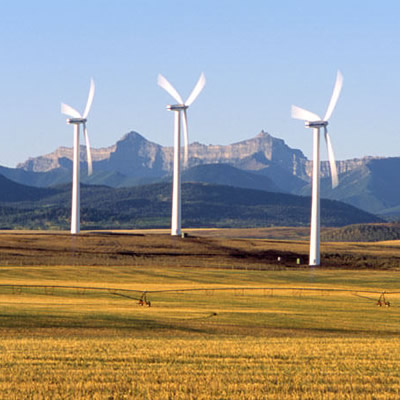New winds are blowing: Canada’s energy shifts to renewable resources

Wind energy is just one component of a diverse and renewable energy supply. — Photo courtesy CanWEA The demand for diversification of Canada's energy
Wind energy is just one component of a diverse and renewable energy supply. — Photo courtesy CanWEA
The demand for diversification of Canada's energy supply has been an obvious and growing interest over the past two decades. The time has finally come, however, when we are seeing significant changes implemented and effectively lessening our reliance on non-renewable energy. As more companies jump on board for the economic benefits, individual Canadians will see job creation and environmental benefits.
National Energy Board documents Canadian shift
For a bit of background, the National Energy Board (NEB) works for the public interest to regulate energy development and trade, and pipelines. Public safety—as well as economic, environmental and social impacts of energy; its sources; and trade—is top priority to the NEB, which reports to Parliament.
The NEB documents Canada’s energy consumption, specifically, the substantial shift towards renewable energy. The NEB stated in its Adoption of Renewable Power Sources report that, as a country, Canada generates a larger percentage of its electricity from renewable resources than other developed countries. Although most of this renewable electricity is derived from hydro, contributing sources are wind, biomass and solar energy.
“Canada’s hydro generation has allowed the country to be one of the global leaders in renewable energy for years,” said Shelley Milutinovic, chief economist of the NEB. It’s a clean spot for Canada to claim. “Now, as solar, wind and other technologies become more cost competitive, we expect to see a continuing increase in their adoption in the future,” she said.
Wind power rises to meet demands
Wind power, especially, is on the rise. Wind is clean, reliable and low-cost, promoting a sustainable future for Canada’s energy supply. In 2015, wind delivered four per cent of Canada’s electricity, ranking Canada seventh for wind production worldwide. The immediate benefits include economic stimulation and a greener country.
The Canadian Wind Energy Association (CanWEA) reports endless facts supporting the growth of wind power. Canada’s first commercial wind farm was installed in Alberta in 1993. Since then, Alberta’s wind energy supply has grown to include 901 turbines. Alberta’s wind market ranks third in Canada, producing enough electricity to power about 625,000 homes—or about four per cent of the province’s demand.
Long-term balance between renewables
While the commitment to renewable energy is strong across Canada’s provinces and territories, there is still a long way to go before we are freed from our reliance on fossil fuels. The key, however, is a balance between renewable resources. Although wind power is an exciting alternative, it will be a combined effort from renewables to overcome fossil fuels.
Alberta’s long-term commitment to renewable energy includes a goal to add 5,000 renewable megawatts to the grid by 2030, as well as replacing the reliance on coal-fired energy by 2030. Even though wind power cannot compensate on its own, it will play a significant part. Other provinces have similar goals. Ontario led the movement when it completely replaced coal-fired electricity back in 2014. A realistic assessment of our energy sources has resulted in a plan that prioritizes the necessary balance.
The adoption of wind power is expected to create jobs across a more diverse energy supply. To assign a number to the promise, CanWEA’s WindVision 2025 initiative estimates wind power will generate at least 52,000 full-time jobs. Many of these will be in the rural communities that host wind farms.



